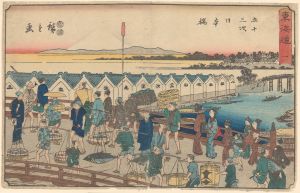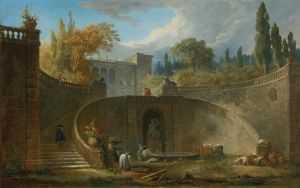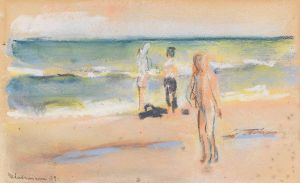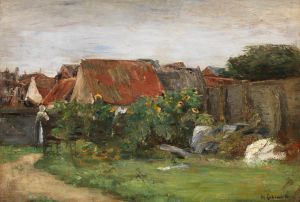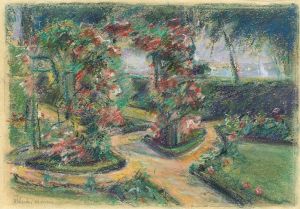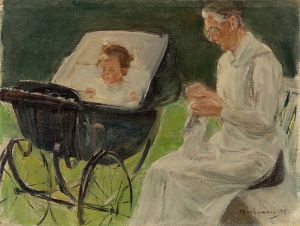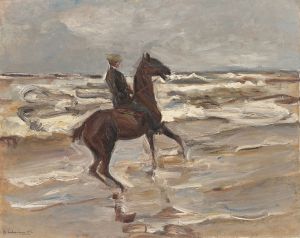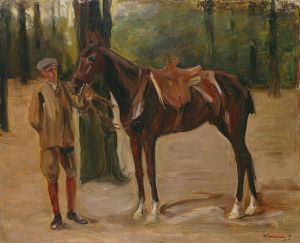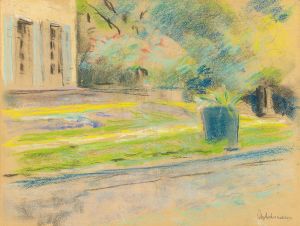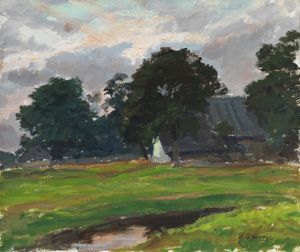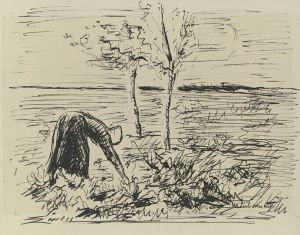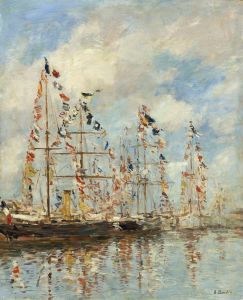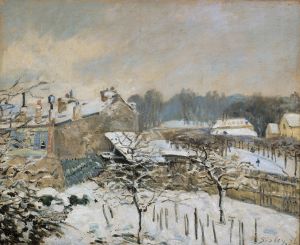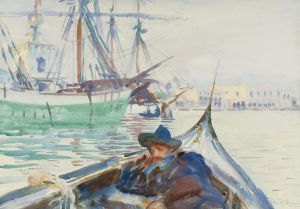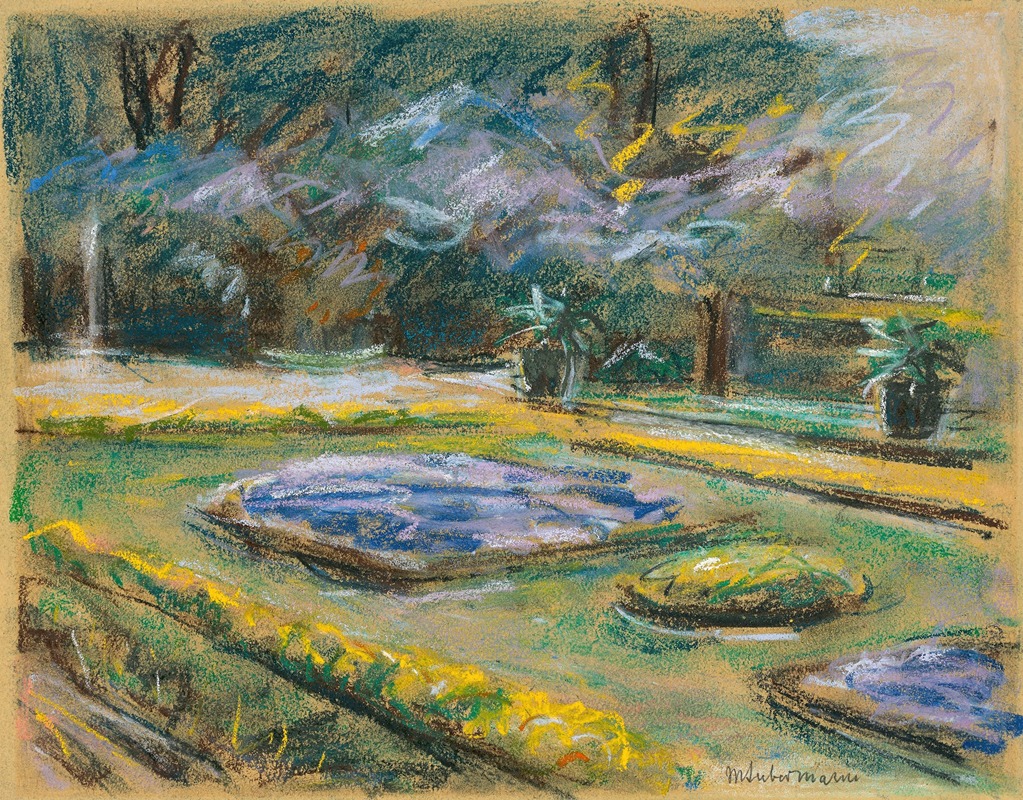
Die Blumenterrasse im Wannseegarten nach Nordosten
A hand-painted replica of Max Liebermann’s masterpiece Die Blumenterrasse im Wannseegarten nach Nordosten, meticulously crafted by professional artists to capture the true essence of the original. Each piece is created with museum-quality canvas and rare mineral pigments, carefully painted by experienced artists with delicate brushstrokes and rich, layered colors to perfectly recreate the texture of the original artwork. Unlike machine-printed reproductions, this hand-painted version brings the painting to life, infused with the artist’s emotions and skill in every stroke. Whether for personal collection or home decoration, it instantly elevates the artistic atmosphere of any space.
Max Liebermann's painting Die Blumenterrasse im Wannseegarten nach Nordosten (The Flower Terrace in the Wannsee Garden Facing Northeast) is a notable example of the artist's mature Impressionist style. Created in 1915, the work depicts a view of Liebermann's garden at his summer residence on the shores of Lake Wannsee, near Berlin, Germany. This residence, purchased by Liebermann in 1909, became a central subject of his artistic output in the later years of his career.
The painting showcases a meticulously arranged flower terrace, with vibrant blooms leading the viewer's eye toward the tranquil waters of Lake Wannsee in the background. The composition is characterized by its harmonious interplay of light, color, and texture, reflecting Liebermann's deep appreciation for nature and his mastery of capturing atmospheric effects. The perspective, which looks northeast, emphasizes the structured beauty of the garden while also conveying a sense of openness and serenity.
Liebermann, a leading figure in German Impressionism, was heavily influenced by the French Impressionists, particularly their focus on plein air painting and the use of light to depict natural scenes. His garden at Wannsee provided an ideal setting for exploring these themes, and he created numerous works featuring different views of the property. The flower terrace, with its carefully cultivated plants and orderly design, reflects both Liebermann's personal taste and the broader cultural interest in garden aesthetics during the early 20th century.
The Wannsee villa and its gardens were designed with Liebermann's input, blending artistic and horticultural elements to create a space that was both a personal retreat and a source of creative inspiration. The painting is part of a series of works that document the changing seasons and light conditions in the garden, showcasing Liebermann's ability to capture fleeting moments in nature.
Today, Die Blumenterrasse im Wannseegarten nach Nordosten is recognized as a significant work within Liebermann's oeuvre. It exemplifies his skill in combining Impressionist techniques with a distinctly German sensibility, rooted in the cultural and natural landscapes of his homeland. The painting is housed in the collection of the Alte Nationalgalerie (Old National Gallery) in Berlin, where it continues to be appreciated for its artistic and historical value.
Max Liebermann's contributions to art extended beyond his paintings; he was also a prominent cultural figure in Germany, serving as the president of the Berlin Secession and later the Prussian Academy of Arts. However, his career and legacy were overshadowed by the rise of the Nazi regime, which targeted him due to his Jewish heritage. Despite these challenges, his work remains a testament to his artistic vision and his enduring connection to the natural world.





